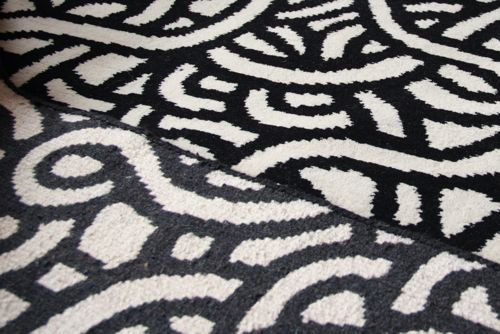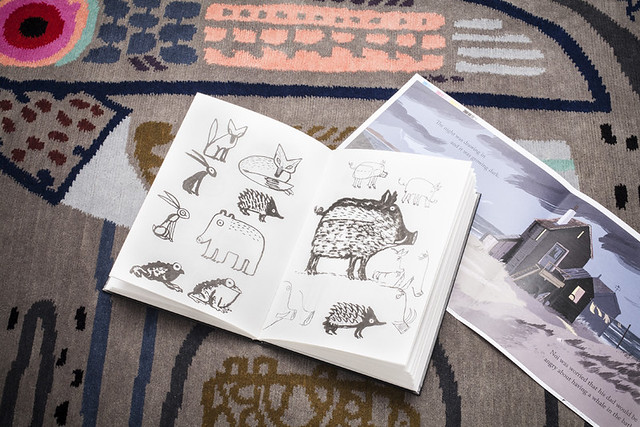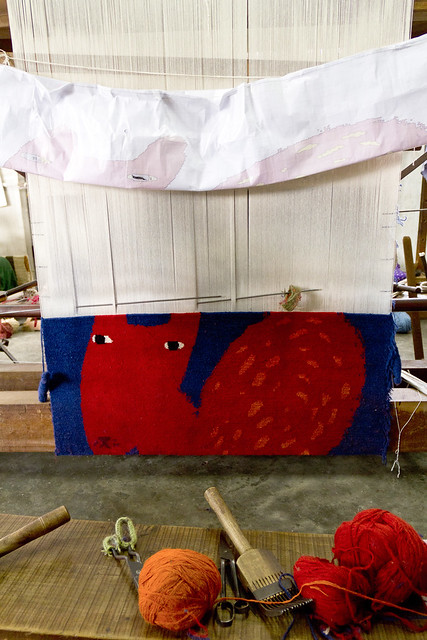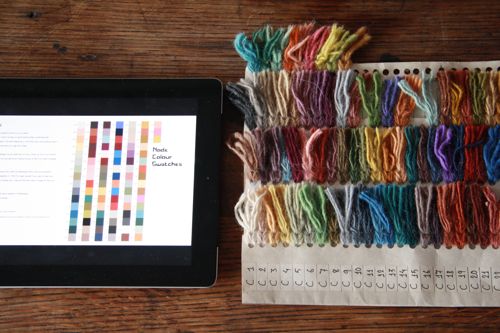Monday, 12:04pm
4 March 2013
Node weaving
The Design Museum highlights a fair trade collaboration between Western illustrators, designers and craftspeople from Nepal
On 5 March 2013, the Design Museum shop will launch a collection of illustrated rugs produced by Node, a non-profit social business working with Nepalese carpet weavers, writes Sarah Snaith. Founded by children’s book author / illustrator Chris Haughton and Kathmandu-based entrepreneur Akshay Sthapit, Node (from the Latin for knot) aims to connect fair trade with design.
The collection brings together eighteen illustrators and designers from Europe and North America such as Lesley Barnes, Petra Börner, Jon Klassen, Micah Lidberg and Geoff McFetridge (see Eye 31), with weavers from the Kumbeshar Technical School (set up by the Khadgi family in 1983) in Nepal. The school teaches practical skills to otherwise illiterate, unskilled and disabled people considered to be in the lowest caste of Nepalese society, a group who customarily work in cleaning and waste disposal. On the basic principle of ‘trade not aid’, Node (in conjunction Kumbeshar) provide paid work for weavers and education for them and their families.
The project came about after Haughton finished his first book, A Bit Lost, and travelled to Nepal and India to work with fair trade clothing network People Tree and their producer groups. While touring a knitwear facility, Haughton spotted a small group of rug weavers and saw an opportunity to translate his illustration to another medium.
Sketches by Benji Davies.
Top: Serge Seidlitz pattern, back and front view.
After commissioning the weavers to convert his picture book owl character to wool, it became apparent that the traditional process had an integral flaw. Among other things, his character’s eyes were distorted and no longer circular.
‘I showed them Photoshop and what could be done to improve accuracy. The rug needs to be interpreted; they can’t just take an illustration and weave it. There is a knot and two ends. Each pixel becomes rectangular, double the height than it is wide’, said Haughton. ‘They were working on square graph paper because it’s all they had. They were squishing the drawing down to make a pattern and then it stretching back out.’
Node digital colour swatches with wool yarn colour samples.
When Node was fully realised in 2010, Haughton had improved pattern making, digitised the hand-dyed wool colours and knew how to manipulate the limitations of the weaving process. The eighteen designed rugs launching at the Design Museum are a product of those lessons with bold designs and ethical production at its core.
Chris Haughton along with designers Donna Wilson, Neasden Control Centre, Petra Börner and Patternity, among others, will be presenting at PechaKucha X Fair Trade at the Design Museum, 4 March 2013 (tonight).
The Node collection launches at the Design Museum shop, 5 March 2013.
Finished carpet of illustration by Micah Lidberg.
Read ‘Making a difference’ about Chris Haughton’s early fair trade work in Nepal on the Eye blog.
Kumbeshar Technical School are a founding member of Fair Trade Nepal and are World Fair Trade Organisation accredited.
Eye is the world’s most beautiful and collectable graphic design journal, published quarterly for professional designers, students and anyone interested in critical, informed writing about graphic design and visual culture. It is available from all good design bookshops and online at the Eye shop, where you can buy subscriptions and back issues.





